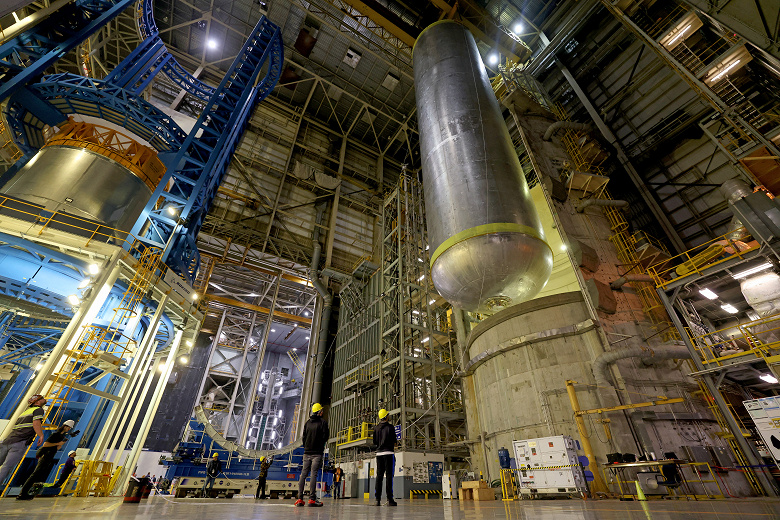NASA completes key milestone in SLS
rocket development
NASA continues to work on the Artemis program with the goal of returning astronauts to the Moon. The SLS (Space Launch System) rocket will be responsible for launching astronauts for this program. NASA recently completed welding of the liquid oxygen tank for the core stage of the SLS rocket at NASA's Michoud Assembly Plant, Louisiana. In addition, the tank containing liquid hydrogen has also already undergone internal cleaning.
Major components of the SLS will be used in the first Artemis III mission, which is planned to land astronauts near the south pole of the Moon. In parallel, processing and preparation of other components of the SLS rocket continues in the assembly shops to support multiple missions within the Artemis program. The tank capacity of the SLS rocket can accommodate more than 2,775,000 liters. The tanks will also be protected by a thermal protection system to withstand extreme temperatures during launch and flight.
The SLS core stage has a thrust of approximately 908 tons, which will successfully launch the Orion spacecraft, astronauts and cargo into lunar orbit as part of the Artemis III mission. SLS is the only rocket capable of such a large-scale launch to the Moon in one go.
The Artemis program is part of NASA's broader strategy to explore space and build the infrastructure for future human missions to Mars. The SLS plays a key role in this strategy, along with the Orion spacecraft, spacesuits, rovers and other systems for lunar and deep space exploration.

